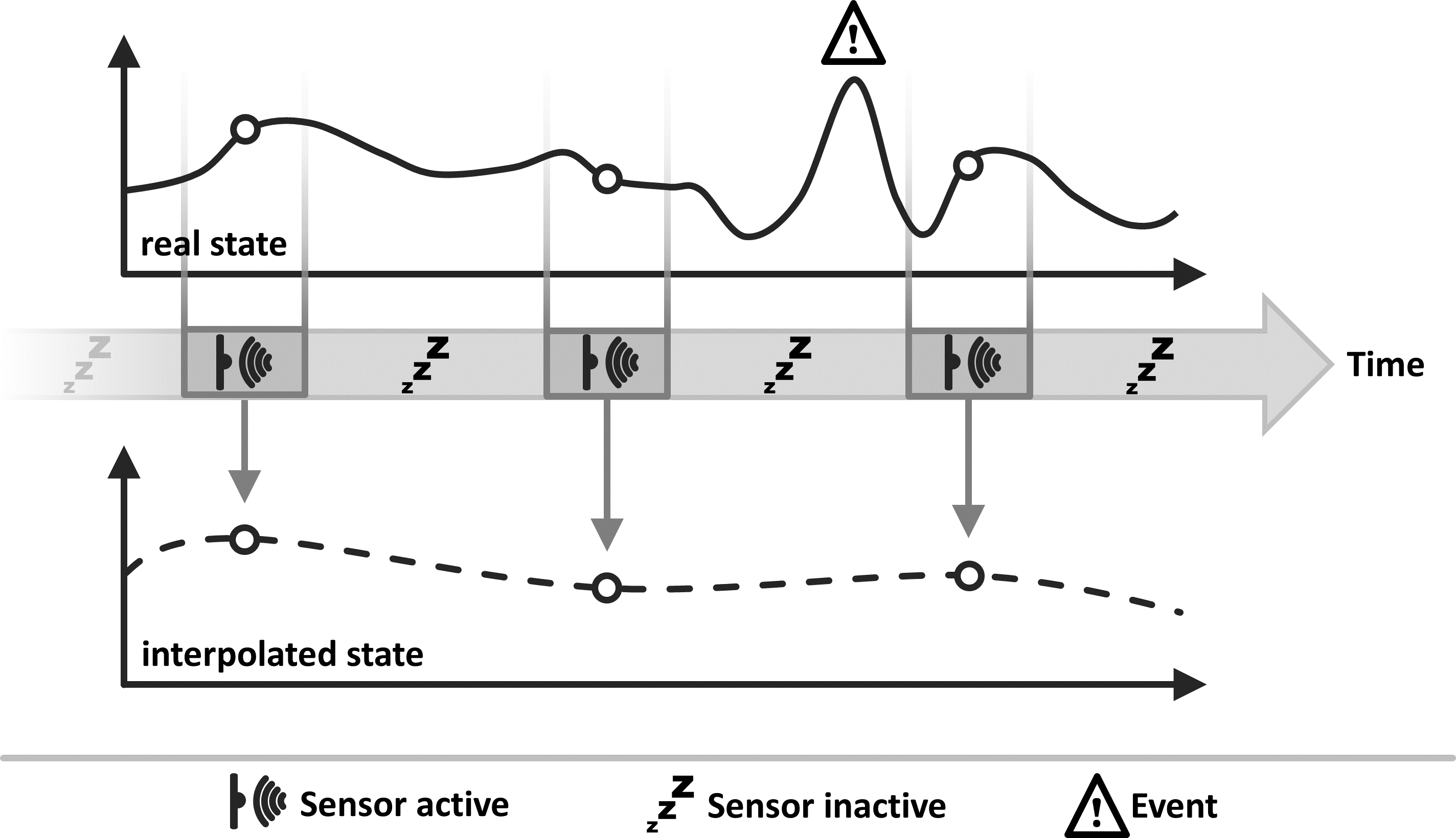Schedule-Based Sensing
![]()
Some situations are not well understood or require a broad overview of measurable data points. Read the sensor based on a schedule. Turn it off between readings if the interval length allows it.
Aliases:
Survey-Based Sensing
Context:
You have a device with sensors built into it or attached to it and need to use these sensors to acquire measurements over long periods.
Problem:
You do not know what kinds of events you are looking for in your measurements or you need a general overview of the trend of the phenomenon that you are measuring.
Forces:
-
Energy Requirements: Leaving sensors running all the time allows them to record detailed measurements but uses more energy.
-
Initialization Delay: Sensors can be turned off to save energy but need some time to initialize and produce sensible values when turned on again.
-
Size: Measuring and sending many values over a long period enables detailed analysis but takes up storage space and communication bandwidth.
-
Fluctuation: Sensor measurements fluctuate but for your use case, long-term trends are more important than accurately measuring every spike.
-
Knowledge: With some knowledge about what you want to measure, you can get better results by applying techniques specifically tailored to your use case. However, in some cases, you do not precisely know what you are looking for.
-
Relevance: In some cases, only specific events are of relevance to you, but in other cases, you may be more interested in general long-term trends.
Solution:
Define a schedule for sensor reading which fits with your use case’s requirements. Program the device to power up its sensors and read their values according to this schedule. Power down the sensors after reading.

Solution Details:
Benefits:
Variants:
Related Patterns:
Known Uses:
- L. Reinfurt, U. Breitenbücher, M. Falkenthal, F. Leymann, and A. Riegg, “Internet of Things Patterns for Devices: Powering, Operating, and Sensing,” International Journal on Advances in Internet Technology, vol. 10, no. 3 & 4, pp. 106–123, 2017. Available at http://www.iariajournals.org/internet_technology/inttech_v10_n34_2017_paged.pdf